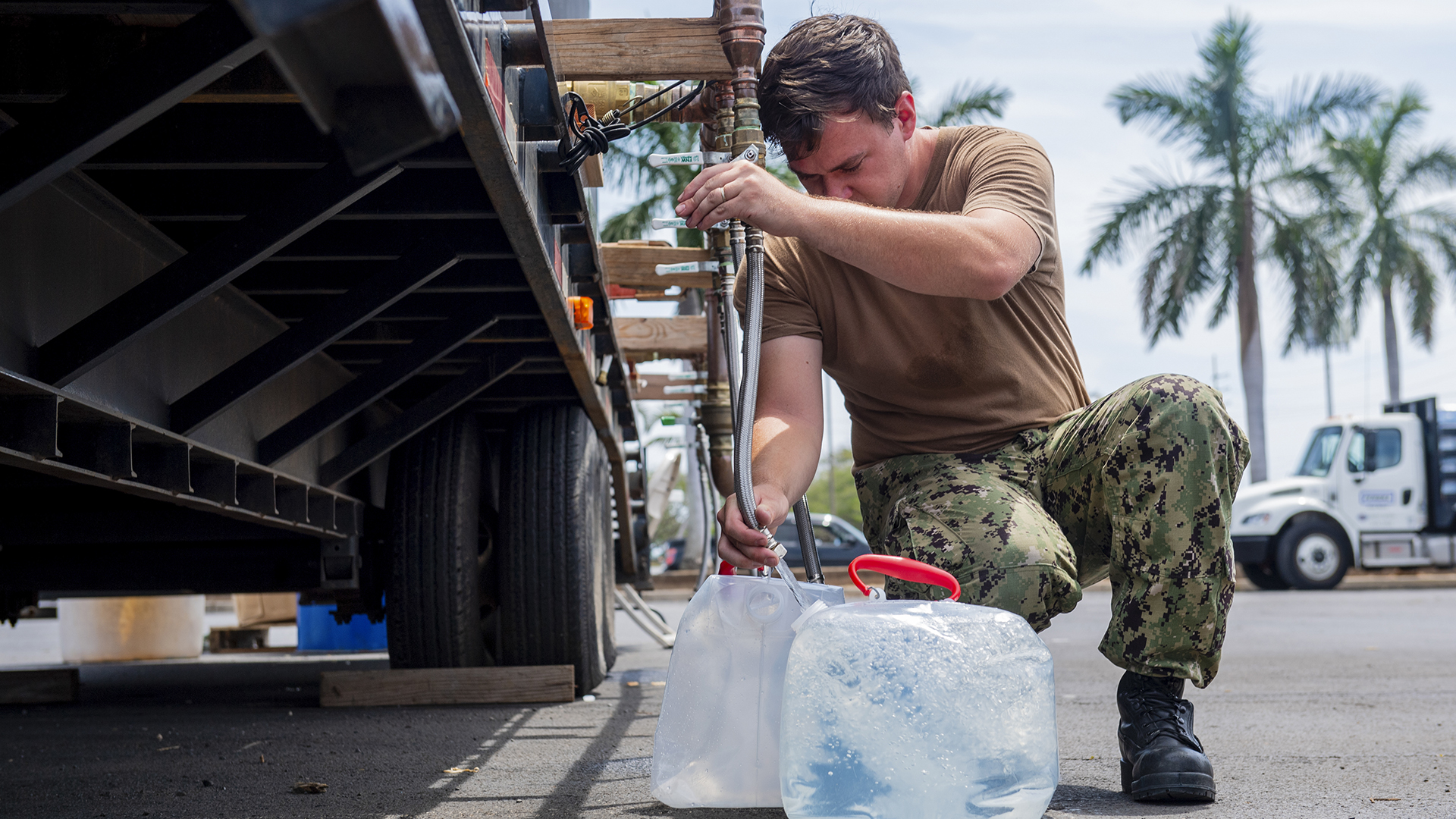Millions Exposed: Contaminated Drinking Water Crisis In America

Table of Contents
Sources of Drinking Water Contamination in America
America's drinking water sources face a multitude of threats leading to widespread water contamination. These sources of pollution compromise drinking water safety and necessitate urgent action.
-
Aging Water Infrastructure: The United States boasts a vast, aging water infrastructure. Millions of miles of pipes, many dating back to the early 20th century, are corroding and leaching contaminants, most notably lead, into our drinking water. The EPA estimates that lead pipes still supply water to at least 6.1 million homes across the country, resulting in widespread lead poisoning, especially harmful to children. This aging infrastructure is a significant contributor to water pollution. Many communities lack the resources to replace these aging pipes, exacerbating the problem.
-
Industrial and Agricultural Pollution: Industrial discharge routinely contaminates waterways with harmful chemicals, heavy metals (like mercury and arsenic), and toxins. Agricultural runoff carries pesticides, herbicides, fertilizers, and animal waste into rivers, lakes, and groundwater, further polluting our water sources. For example, the contamination of the Flint River with industrial pollutants led to a devastating public health crisis in Flint, Michigan. This industrial pollution highlights the urgent need for stronger environmental regulations.
-
PFAS Contamination: Per- and polyfluoroalkyl substances (PFAS), often called “forever chemicals,” are persistent pollutants found in many industrial products and firefighting foam. These substances contaminate drinking water supplies across the country, posing significant health risks. Areas near military bases and industrial sites are particularly vulnerable to PFAS contamination. The long-term health consequences of PFAS exposure are still being studied, but the potential for serious health problems is undeniable.
-
Sewage Overflow and Wastewater Treatment Issues: Aging sewage systems across the nation frequently overflow during heavy rainfall, releasing untreated sewage and contaminants directly into water bodies. Inadequate wastewater treatment facilities further contribute to water pollution by failing to remove harmful pathogens and chemicals before discharging wastewater into the environment. These events demonstrate a critical need for updated water infrastructure.
Health Impacts of Contaminated Drinking Water
The consequences of consuming contaminated drinking water are severe and far-reaching, impacting public health on a massive scale. The long-term health effects of contaminated water are especially devastating for vulnerable populations.
-
Lead Poisoning: Lead exposure, particularly in children, can cause irreversible neurodevelopmental damage, impacting cognitive function, behavior, and academic performance. Symptoms of lead poisoning can include learning disabilities, developmental delays, hyperactivity, and behavioral problems. Long-term exposure can lead to serious health issues throughout life. Lead contamination of drinking water is a major concern.
-
Cancer Risk: Exposure to certain water contaminants, such as arsenic, chromium, and certain pesticides, has been linked to increased cancer risk. Studies consistently show a correlation between long-term exposure to these substances in drinking water and the development of various types of cancer. Water quality and cancer risk are directly linked.
-
Waterborne Illnesses: Contaminated drinking water can cause various waterborne illnesses, including cholera, typhoid fever, giardiasis, and cryptosporidiosis. These illnesses can range from mild gastrointestinal distress to life-threatening conditions, particularly among vulnerable populations such as the elderly and young children. Outbreaks of waterborne diseases underscore the critical importance of clean water access.
-
Other Health Problems: Long-term exposure to contaminated water can lead to a range of other health problems, including reproductive issues, kidney damage, cardiovascular disease, and immune system dysfunction. The cumulative effect of exposure to multiple contaminants can exacerbate these health risks.
Addressing the Contaminated Drinking Water Crisis
Solving America's contaminated drinking water crisis requires a multifaceted approach involving significant investments and policy changes. The responsibility for safe drinking water lies with us all.
-
Investing in Modern Water Infrastructure: The federal government and local municipalities must invest heavily in replacing lead pipes, upgrading aging water treatment plants, and improving wastewater management systems. This substantial investment is essential to ensure clean and safe drinking water for all.
-
Strengthening Environmental Regulations: Stricter regulations are needed to control industrial and agricultural discharge, limiting the amount of harmful pollutants entering our water sources. Enforcing these regulations and holding polluters accountable is crucial.
-
Improving Water Treatment Technologies: Advancements in water treatment technologies offer the potential to remove a wider range of contaminants more effectively. Investing in and implementing these technologies is crucial for improving water quality.
-
Public Awareness and Education: Educating the public about the risks of contaminated water and the importance of regular water quality testing is critical. Promoting responsible water usage and conservation practices are equally important.
-
Access to Clean Water for All: Ensuring equitable access to safe, clean drinking water for all Americans, regardless of socioeconomic status or geographic location, is a fundamental human right. This requires targeted initiatives to address disparities in water access and quality.
Conclusion:
The contaminated drinking water crisis in America is a serious and widespread public health threat. The sources of contamination are numerous, and the health impacts are devastating. Addressing this crisis demands immediate and comprehensive action. We must invest in modernizing our water infrastructure, strengthening environmental regulations, improving water treatment technologies, raising public awareness, and ensuring equitable access to clean water for everyone. Let's work together to ensure every American has access to clean and safe drinking water – demand an end to the contaminated drinking water crisis now!

Featured Posts
-
 Ex Soldier Chokes Out Paddy Pimblett In 35 Second Upset Victory
May 15, 2025
Ex Soldier Chokes Out Paddy Pimblett In 35 Second Upset Victory
May 15, 2025 -
 Hyeseong Kims Mlb Debut Dodgers Call Up Report From Kbo
May 15, 2025
Hyeseong Kims Mlb Debut Dodgers Call Up Report From Kbo
May 15, 2025 -
 Repechage Lnh Decentralise Bilan Et Reflexions
May 15, 2025
Repechage Lnh Decentralise Bilan Et Reflexions
May 15, 2025 -
 Nba Play In Warriors Grizzlies Matchup Preview
May 15, 2025
Nba Play In Warriors Grizzlies Matchup Preview
May 15, 2025 -
 Rays Dominate Padres In Series Sweep
May 15, 2025
Rays Dominate Padres In Series Sweep
May 15, 2025
